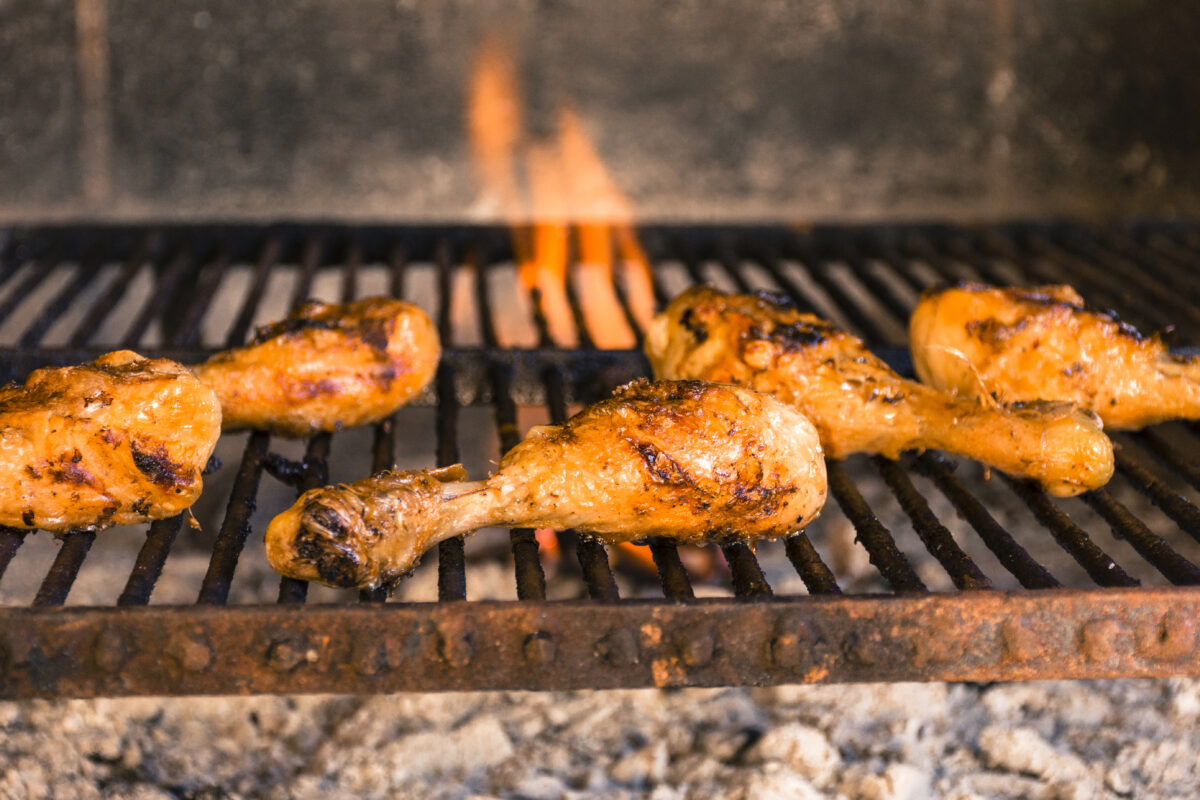Healthy and Tasty: How to Cook Chicken Legs on the Grill

Regarding summer barbecues and healthy eating, few dishes rival the popularity and deliciousness of grilled chicken legs. These succulent pieces of meat are not only flavorful and juicy but also a more nutritious option compared to many other grilled meats. In this comprehensive guide, we’ll delve into how to cook chicken legs on the grill to perfection, ensuring they are both healthy and tasty. Whether you’re a grilling novice or a seasoned pro, these tips and techniques will elevate your grilling game.
Why Choose Chicken Legs?
Before we dive into the grilling process, let’s discuss why chicken legs are a great choice:
- Nutritional Benefits: Chicken legs are a good source of protein, essential vitamins, and minerals. They provide nutrients such as vitamin B6, phosphorus, and selenium, which are vital for maintaining a healthy body.
- Flavor and Juiciness: Chicken legs’ higher fat content than breast meat makes them juicier and more flavorful. This fat also helps keep the meat tender during grilling.
- Cost-Effective: Chicken legs are typically more affordable than other cuts of chicken, making them a budget-friendly option for feeding a crowd.
- Versatility: Chicken legs can be marinated, seasoned, and cooked in various ways, offering endless possibilities for delicious meals.
Preparing Chicken Legs for the Grill
Choosing the Right Chicken Legs
When selecting chicken legs, opt for fresh, organic, or free-range options if possible. These tend to have better flavor and are raised without antibiotics or hormones.
Cleaning and Trimming
- Rinse and Pat Dry: Rinse the chicken legs under cold water and pat them dry with paper towels. This helps remove any residue and ensures the skin crisps up nicely on the grill.
- Trimming Excess Fat: Trim any excess fat or skin flaps to prevent flare-ups on the grill. However, leave some skin on for flavor and moisture.
Marinating for Flavor and Tenderness
Marinating is a crucial step in infusing chicken legs with flavor and ensuring they remain juicy during grilling. Here are some tips and marinade recipes:
Basic Marinade Recipe
- Ingredients:
- 1/4 cup olive oil
- 2 tablespoons lemon juice
- 3 cloves garlic, minced
- 1 teaspoon paprika
- 1 teaspoon dried oregano
- 1/2 teaspoon salt
- 1/4 teaspoon black pepper
- Instructions:
- Combine all ingredients in a bowl and mix well.
- Place the chicken legs in a large resealable bag or container.
- Pour the marinade over the chicken legs, ensuring they are well coated.
- Seal the bag or cover the container and refrigerate for at least 2 hours, preferably overnight.
Additional Marinade Ideas
- Asian-Inspired: Soy sauce, ginger, garlic, honey, and sesame oil.
- Mediterranean: Olive oil, lemon juice, garlic, rosemary, and thyme.
- Spicy: Hot sauce, cayenne pepper, garlic powder, and onion powder.
How to Cook Chicken Legs on the Grill
Now that your chicken legs are marinated and ready, it’s time to fire up the grill. Follow these steps for perfectly grilled chicken legs:
Preheating the Grill
- Clean the Grill Grates: Use a grill brush to clean the grates, removing any leftover residue from previous grilling sessions.
- Preheat the Grill: Preheat your grill to medium-high heat (about 375-400°F or 190-204°C). This ensures a nice sear and crispy skin.
Setting Up for Indirect and Direct Heat
Using a two-zone grilling method (direct and indirect heat) is essential for cooking chicken legs evenly:
- Direct Heat: Place the coals or burners on one side of the grill. This area will provide direct heat for searing.
- Indirect Heat: Leave the other side of the grill without coals or turn off those burners. This area will provide indirect heat for cooking the chicken legs through without burning.
Grilling the Chicken Legs
- Sear on Direct Heat: Place the chicken legs on the direct heat side of the grill. Sear each side for about 2-3 minutes until you get a nice golden-brown color.
- Move to Indirect Heat: Once seared, move the chicken legs to the indirect heat side of the grill. This prevents them from burning while they cook through.
- Close the Lid: Close the grill lid to create an oven-like environment. This helps cook the chicken evenly.
Monitoring and Turning
- Turn Occasionally: Turn the chicken legs every 5-7 minutes to ensure even cooking and prevent charring.
- Check for Doneness: Use a meat thermometer to check the internal temperature. Chicken legs should reach an internal temperature of 165°F (74°C). Insert the thermometer into the thickest part of the meat, avoiding the bone.
Final Sear (Optional)
For extra crispy skin, you can finish the chicken legs with a quick final sear over direct heat for 1-2 minutes on each side.
Tips for Healthier Grilling
Grilling chicken legs can be a healthy cooking method if done correctly. Here are some tips to keep it as healthy as possible:
- Use Lean Marinades: Opt for marinades that are low in sugar and fat. Citrus-based marinades are a great option.
- Trim Excess Fat: Removing excess fat helps reduce flare-ups and charred spots, which can be unhealthy.
- Avoid Overcooking: Overcooking can dry out the meat and create potentially harmful charred bits. Monitor the internal temperature and remove the chicken from the grill once it reaches 165°F.
- Grill Vegetables Too: Pair your chicken legs with grilled vegetables for a balanced and nutritious meal. Vegetables like bell peppers, zucchini, and asparagus complement grilled chicken perfectly.
Serving Suggestions
Grilled chicken legs are incredibly versatile and can be paired with a variety of side dishes. Here are some healthy and tasty serving suggestions:
Fresh Salads
- Mixed Green Salad: A light and refreshing salad with mixed greens, cherry tomatoes, cucumbers, and a lemon vinaigrette.
- Greek Salad: A Mediterranean-inspired salad with cucumbers, tomatoes, red onions, olives, and feta cheese, dressed with olive oil and lemon juice.
Grilled Vegetables
- Grilled Asparagus: Seasoned with olive oil, salt, and pepper, then grilled until tender and slightly charred.
- Grilled Corn on the Cob: Brushed with a mixture of olive oil and herbs, then grilled until golden brown.
Whole Grains
- Quinoa Salad: A nutritious side dish made with cooked quinoa, diced vegetables, and a light dressing.
- Brown Rice Pilaf: Flavored with herbs and spices, this makes a hearty and healthy accompaniment.
Flavor Variations and Enhancements
Sauces and Glazes
- BBQ Sauce: Brush a light layer of your favorite BBQ sauce on the chicken legs during the last few minutes of grilling for a sweet and tangy flavor.
- Honey Mustard Glaze: Mix equal parts honey and mustard and brush it on the chicken legs in the final minutes of cooking.
Spice Rubs
- Cajun Spice Rub: A blend of paprika, garlic powder, onion powder, cayenne pepper, and thyme.
- Herb Blend: A mix of dried basil, oregano, thyme, rosemary, and garlic powder.
Troubleshooting Common Issues
- Dry Chicken Legs: If your chicken legs turn out dry, ensure you are not overcooking them. Always monitor the internal temperature and consider marinating them longer for added moisture.
- Burnt Skin: To avoid burnt skin, cook the chicken legs over indirect heat after searing. Additionally, trimming excess fat can prevent flare-ups.
- Uneven Cooking: If your chicken legs are cooking unevenly, make sure you’re using the two-zone grilling method and turning the legs regularly.
Conclusion
Grilling chicken legs is a fantastic way to enjoy a healthy and delicious meal. By following these steps on how to cook chicken legs on the grill, you can achieve perfectly cooked, juicy, and flavorful results every time. Remember to marinate your chicken for added flavor, use the two-zone grilling method for even cooking, and keep an eye on the internal temperature to avoid overcooking. Pair your grilled chicken legs with fresh salads, grilled vegetables, and whole grains for a nutritious and satisfying meal. Happy grilling!










